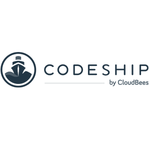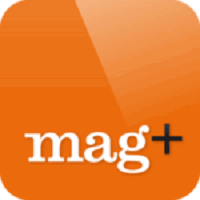Description

Codeship

Pega 7 App
Comprehensive Overview: Codeship vs Pega 7 App
Codeship and Pega 7 App are distinct products serving different purposes in the software development and business process management sectors. Here's a comprehensive overview of each:
Codeship
a) Primary Functions and Target Markets
-
Primary Functions: Codeship is a continuous integration and continuous delivery (CI/CD) platform that automates the testing and deployment of code. The platform simplifies the process of integrating code into shared repositories and helps streamline deployments to various environments, facilitating agile software development and DevOps practices.
-
Target Markets: Codeship primarily targets software development teams and organizations that are embracing DevOps methodologies, ranging from startups to medium-sized businesses that require efficient pipeline automation for their software development lifecycle.
b) Market Share and User Base
-
Codeship has been recognized as a popular tool within the CI/CD space, but it's essential to note that the market for such tools is highly competitive, with major players like Jenkins, GitLab CI/CD, and CircleCI potentially having larger market shares due to their broader feature sets and integration capabilities.
-
In terms of user base, Codeship is often favored by teams seeking a user-friendly and straightforward solution, particularly those using cloud-based environments. However, exact user base numbers and market share metrics may vary and would require access to proprietary data or recent industry analysis.
c) Key Differentiating Factors
-
Simplicity and Ease of Use: Codeship is praised for its simplicity and ease of setup compared to more complex CI/CD tools.
-
Focus on Continuous Delivery: It offers strong continuous delivery support, allowing teams to deploy to various platforms effortlessly.
-
Integration Capabilities: Codeship provides seamless integrations with popular services like GitHub, AWS, and Docker.
Pega 7 App
a) Primary Functions and Target Markets
-
Primary Functions: Pega 7 is an application development platform focused on business process management (BPM) and customer relationship management (CRM). It aims to help businesses build applications quickly and enhance process automation, case management, and decision-making capabilities.
-
Target Markets: Pega 7 targets large enterprises requiring powerful BPM and CRM solutions, especially in industries such as banking, insurance, healthcare, and telecommunications. It is designed for businesses looking to automate complex workflows and improve customer interactions.
b) Market Share and User Base
-
Pega is a well-established player in the BPM and CRM markets. It competes with other large-scale enterprise solutions such as Salesforce, SAP, and Oracle in CRM, as well as IBM and Appian in BPM.
-
Pega has a substantial user base among Fortune 500 companies and is recognized for its focus on large-scale enterprise applications requiring robust customization and integration.
c) Key Differentiating Factors
-
Robust BPM Capabilities: Pega 7 stands out for its ability to design and automate complex business processes with a high degree of flexibility.
-
No-Code/Low-Code Development: Pega allows business users to develop applications with minimal coding, using a visual approach to application design.
-
AI-Driven Decisioning: It includes advanced decision management and real-time analytics, which help in making automated, data-driven decisions.
-
Scalability: Pega is designed for large enterprises, offering scalable solutions capable of handling high volumes and complex processes.
Comparative Overview
While Codeship and Pega 7 serve different niches (CI/CD and BPM/CRM, respectively), the products are suited to address automation in their domains. They differ in target markets, with Codeship appealing more towards agile software developers and startups, and Pega 7 catering to large enterprises needing deep process automation. In terms of market presence, Codeship faces more direct competition in a crowded field of CI/CD tools, whereas Pega occupies a strong position among enterprise-level BPM and CRM solutions. The simplicity of Codeship contrasts with the advanced capabilities and scalability offered by Pega 7, reflecting their core differentiators aligned to their respective business goals.
Contact Info

Year founded :
2021
Not Available
Not Available
India
http://www.linkedin.com/company/codeship12

Year founded :
Not Available
Not Available
Not Available
Not Available
Not Available
Feature Similarity Breakdown: Codeship, Pega 7 App
Codeship and Pega 7 App are quite distinct in their primary functionalities and target audiences, making a direct comparison challenging. However, there are some high-level features worth comparing:
a) Core Features in Common
While Codeship and Pega 7 App serve different purposes, they may share some high-level features common to modern software platforms:
- Cloud Integration: Both platforms support integration with cloud services, facilitating seamless deployment (Codeship) and operations (Pega).
- Automation: Codeship automates the software build and deployment process, while Pega 7 enables automation of business processes and workflows.
- Scalability: Each platform is built to scale according to usage demands, whether that's processing more data for enterprise applications (Pega) or handling more builds and deployments (Codeship).
b) User Interface Comparison
- Codeship: The interface of Codeship is streamlined for software developers. It emphasizes simplicity and efficiency in setting up Continuous Integration and Continuous Delivery (CI/CD) pipelines. The UI is typically web-based, showing build status, deployment logs, and configuration settings.
- Pega 7 App: Pega’s interface focuses on business process management and application development. It is designed for business users and developers to create workflows and applications with ease. The user interface has drag-and-drop capabilities for designing processes, applications, and cases without needing deep coding knowledge.
c) Unique Features
Codeship:
- CI/CD Pipelines: Specialized in CI/CD functionality, providing dedicated solutions for automated testing and deployment.
- Developer-centric Tools: It integrates with multiple development tools and platforms to streamline the software development lifecycle.
- Container Support: Supports Docker integration for containerized applications.
Pega 7 App:
- Business Process Management (BPM): Pega is known for its powerful BPM capabilities, allowing organizations to design, automate, and manage complex processes.
- Low-code Platform: Pega offers a low-code environment, enabling users to build applications with minimal coding through visual tools.
- AI and Decisioning: Provides built-in artificial intelligence and decision-making tools to support real-time decisioning and analytics.
In conclusion, while there may be some similarities in terms of cloud integration and automation, Codeship and Pega 7 App are fundamentally designed for different purposes: Codeship for CI/CD in software development and Pega for business process management and application development. Their interfaces reflect these focuses, and each has unique features tailored to their respective domains.
Features

Not Available

Not Available
Best Fit Use Cases: Codeship, Pega 7 App
a) Codeship
Best Fit Use Cases:
-
Startups and Small to Medium Enterprises (SMEs): Codeship is well-suited for startups and SMEs that require a cost-effective, streamlined continuous integration and delivery (CI/CD) solution. Its simplicity and ease of use make it ideal for smaller teams that may not have extensive DevOps expertise.
-
Agile Development Projects: With its focus on CI/CD, Codeship is a great choice for businesses practicing Agile methodologies. It helps facilitate rapid development cycles and continuous deployment, which are core to Agile practices.
-
Cloud-Native Applications: Companies building cloud-native applications can benefit from Codeship’s ability to integrate seamlessly with cloud services and its Docker support, which simplifies containerized deployments.
-
Open Source Projects: Its free tier for open-source projects allows developers to easily integrate CI/CD pipelines without incurring costs, encouraging innovation and productivity within the open-source community.
b) Pega 7 App
Preferred Scenarios:
-
Enterprise-Level Operations: Pega 7 is designed for large enterprises needing robust business process management and customer relationship management solutions. Its ability to handle complex processes makes it ideal for big businesses.
-
Industries with Complex Workflow Needs: Sectors such as finance, healthcare, and insurance benefit from Pega 7’s ability to manage intricate workflows and compliance requirements.
-
Businesses Requiring Rapid Application Development: Pega 7’s no-code/low-code platform allows companies to quickly develop and deploy applications, making it suitable for businesses needing to accelerate digital transformation.
-
Customizable, Dynamic Case Management: For organizations that require custom case management solutions and dynamic automation across business processes, Pega 7 provides powerful tools to build and adapt systems to meet business needs.
d) Industry Verticals and Company Sizes
-
Codeship:
- Industry Verticals: IT, software development, SaaS companies, and any industry relying heavily on software delivery pipelines.
- Company Size: Primarily small to medium-sized businesses, but it scales well for larger organizations that seek simplicity in their CI/CD processes.
-
Pega 7:
- Industry Verticals: Financial services, healthcare, insurance, telecommunications, and other sectors requiring detailed process automation and customer engagement solutions.
- Company Size: Medium to large enterprises, especially those with complex, customizable workflow requirements.
Both Codeship and Pega 7 cater to different needs in the tech ecosystem, with Codeship focusing on developers looking for a straightforward CI/CD tool and Pega 7 providing enterprise-level solutions for detailed process management and application development.
Pricing

Pricing Not Available

Pricing Not Available
Metrics History
Metrics History
Comparing undefined across companies
Conclusion & Final Verdict: Codeship vs Pega 7 App
To provide a conclusion and final verdict on whether Codeship or Pega 7 App offers the best overall value, we need to evaluate each product based on its features, benefits, and potential drawbacks.
a) Best Overall Value
Codeship is a continuous integration and continuous delivery (CI/CD) platform designed to automate the process of testing and deploying code. It is ideal for software development teams looking to streamline their development workflow, particularly those involved in Agile and DevOps practices.
Pega 7 App is a Business Process Management (BPM) and Customer Relationship Management (CRM) platform focusing on building enterprise applications with robust capabilities in process automation, case management, and user experience design. It is suitable for businesses craving strong application development and process optimization capabilities.
Conclusion:
- If a development team is heavily centered around agile methodologies, frequent deployments, and looking to streamline and automate the development and delivery process, Codeship might offer the best overall value.
- For organizations needing in-depth process management and resource-heavy enterprise application solutions, particularly concerning customer interactions and automating business processes, Pega 7 App would provide more tangible value.
b) Pros and Cons
Codeship
-
Pros:
- Strong CI/CD capabilities enhance development speed and reduce manual errors.
- Cloud-based, easily integrates with existing tools and infrastructure.
- Simple to set up with pipelines for various environments.
-
Cons:
- May not be suitable for businesses not heavily focused on software development environments.
- Limited to CI/CD functions, lacking broader enterprise functionalities.
Pega 7 App
-
Pros:
- Excellent for automating and streamlining complex business processes.
- Offers robust capabilities in case management and customer interactions.
- Highly scalable solution with opportunities for custom application development.
-
Cons:
- Requires significant investment and learning curve to implement effectively.
- More suited to larger organizations with complex operational needs.
c) Recommendations
-
Assess Needs: Businesses should carefully assess their needs. For software teams needing fast, agile delivery methods, Codeship is more fitting. For organizations in need of extensive bpm and crm solutions, Pega 7 App aligns closer to their goals.
-
Budget Considerations: Codeship may be cost-effective for smaller teams focused solely on CI/CD, but Pega 7 may justify its higher costs with added features for larger enterprises needing robust process management capabilities.
-
Long-term Growth: Users contemplating future scalability and advanced process automation should consider the Pega 7 App, whereas those favoring a nimble CI/CD pipeline for tech development may see Codeship as a better long-term investment.
Ultimately, the decision should align with the core competencies of each product versus the strategic objectives of the organization using them. Thus, organizations should match their exact needs with the platform features to determine which solution offers the better return on investment.
Add to compare
Add similar companies



